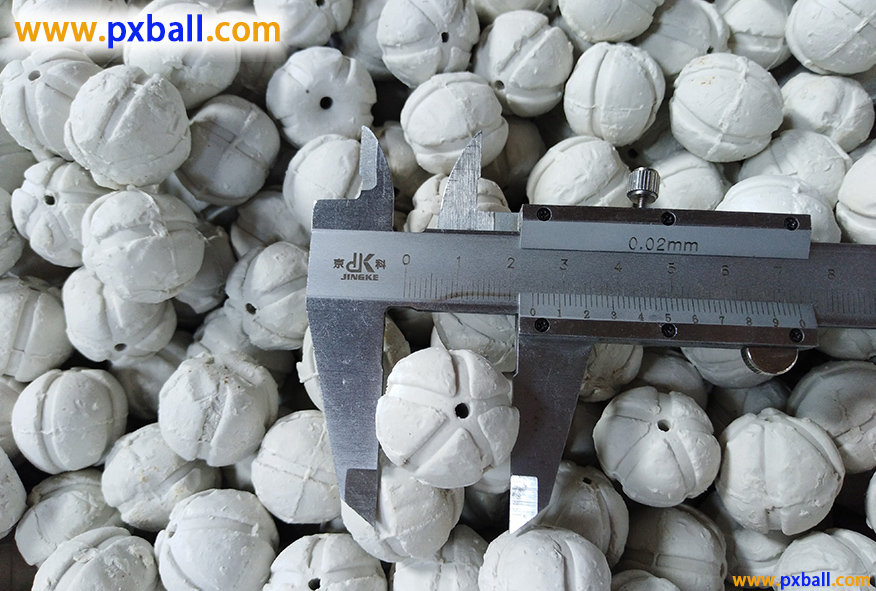
ceramic ball with holes are widely used as fillers in industries such as petroleum, chemical, fertilizer, natural gas, and environmental protection.
1、 Characteristics
Perforated structure
Porous ceramic balls have a large specific surface area, which can increase the contact area with fluids or gases and improve mass and heat transfer efficiency.
Open hole design facilitates fluid flow, reduces pressure drop, and minimizes energy consumption.
High strength and wear resistance
ceramic ball with holes are made of high-quality ceramic materials with high strength and hardness, capable of withstanding significant pressure and wear.
Stable performance can still be maintained in harsh working environments such as high temperature, high pressure, and corrosive media.
Good chemical stability
ceramic ball with holes have good corrosion resistance to most chemicals and will not undergo chemical reactions with reactants or products, ensuring the stability and reliability of the process.
Good thermal insulation performance
Ceramic materials with ceramic ball with holes have low thermal conductivity, which can effectively insulate heat, reduce heat loss, and improve energy utilization efficiency.
2、 Application fields of ceramic ball with holes
Petrochemical industry
As a catalyst carrier, it provides good support and dispersion for the catalyst, improving its activity and selectivity.
Used in packed towers as a medium for gas-liquid contact, promoting mass transfer processes and improving separation efficiency.
Fertilizer industry
In the production process of synthetic ammonia, urea, etc., ceramic ball with holes can be used in reactors, heat exchangers, and other equipment to improve reaction efficiency and heat transfer.
Natural gas industry
Used in natural gas purification devices to remove impurities and moisture, and improve the quality of natural gas.
Environmental Protection Industry
As an adsorbent carrier, it is used for waste gas and wastewater treatment to remove harmful substances and protect the environment.
3、 Precautions for selecting and using ceramic ball with holes
Select appropriate specifications and performance parameters based on process requirements, such as pore size, bulk density, compressive strength, etc.
During the filling process, it is necessary to ensure the uniform distribution of ceramic balls and avoid gaps or accumulation.
Regularly inspect the wear of ceramic balls and replace damaged ceramic ball with holes in a timely manner to ensure the normal operation of the equipment.
Avoid contact with sharp objects to prevent damage to the ceramic ball.
During storage and transportation, attention should be paid to moisture and shock prevention to avoid damage to the ceramic balls.